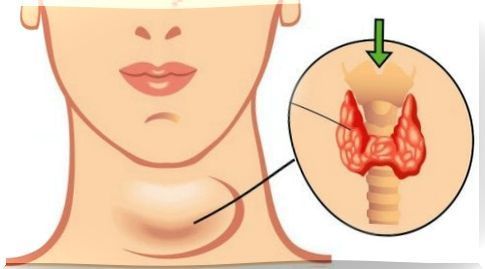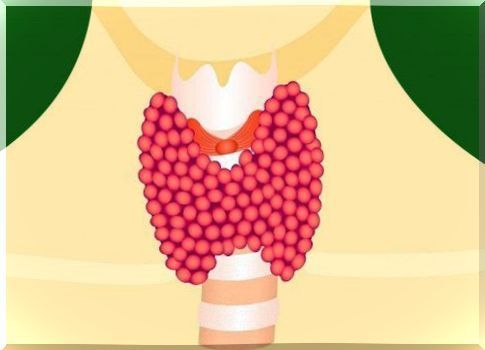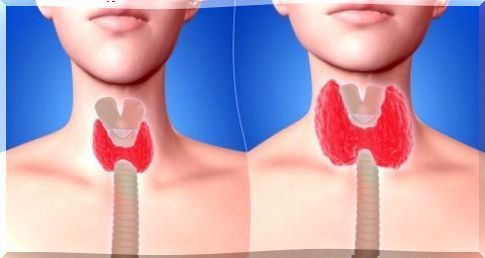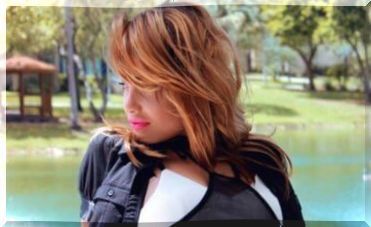Thyroid Anatomy
The thyroid organ is located below the “Adam’s apple”. It has two lobes and an isthmus between them and is covered by a capsule

The anatomy of the thyroid, as well as its physiology, are a true wonder of nature. The thyroid gland, or thyroid body, is an odd organ. It is located below the “Adam’s apple”, next to the thyroid cartilage and above the windpipe. Its basic function is to regulate the body’s metabolism and sensitivity to other hormones.
The thyroid is located in the infra hyoid compartment. This, in turn, is located between the trachea, esophagus, carotid arteries, and jugular veins. The thyroid is shield-shaped or butterfly-shaped and has a pinkish-gray color.
The thyroid is the largest endocrine gland in the body. Its volume and weight vary according to sex, age and health conditions. However, the normal anatomy of the average thyroid is 7 cm wide by 3 cm high and 18 mm thick. The weight is generally between 25 and 30 grams.
General Aspects in the Anatomy of the Thyroid

As already noted, the shape of this organ is similar to that of a butterfly with outstretched wings. Many also compare it to an “H”. This particular characteristic in the anatomy of the thyroid is due to the fact that it is a bilobed organ. This means that it has two lobes, one on the left and the other on the right. The two are connected by an area called: isthmus.
In some cases a third lobe appears, extending from the isthmus upwards. This lobe is called the pyramidal lobe. There are also cases where there is no isthmus. This is replaced with lateral lobes that extend upwards and form an area called: Pyramid of Lalouette.
The thyroid is completely covered by a fibrous capsule. This capsule sends partitions into the organ. That gives your fabrics a lobular look. This wrap helps keep the thyroid in position.
Conformation of the lateral lobes

In the anatomy of the thyroid it can be seen that each of the lateral lobes takes the shape of a pyramid. The base of it is located at the bottom. This shape makes each lobe have different parts:
- Base. It is convex in shape and is located at the level of the sixth ring of the trachea.
- Vertex. It is rounded in shape and coincides with the posterior border of the thyroid cartilage.
- Faces. There are three: internal, external and posterior. The first is concave, the second is convex, and the third is attached to the vessels and nerves in the area.
- Edges. There are three: anterior, posteroexternal and posterointerno.
It is necessary to clarify that the anterior border goes from the apex of the lobe to the isthmus of the thyroid. The posteroexternal border is associated with the external jugular. And the postero-internal border is displaced between the primitive carotid and the laryngotracheal canal.
We recommend reading: Do you suffer from thyroid problems? See how you can find out
Irrigation and innervation of the thyroid

In the anatomy of the thyroid we find that it is supplied by two arteries : the upper thyroid and the lower thyroid. The first is a branch of the external carotid artery and supplies the upper thyroid area. The second is derived from the subclavian artery and supplies the thyrocervical trunk.
Around the thyroid is a large gathering of veins called the “thyroid plexus. ” The veins that start from this area are divided into three groups:
- Superior thyroid veins. They are associated with the superior thyroid artery and end up opening in the internal jugular
- Lower thyroid veins. They arise at the lower border of the gland and reach the internal jugulars and the left brachiocephalic trunk.
- Middle thyroid veins. They are located between the upper and lower ones and drain in the internal jugular
The lymphatic vessels make up the parathyroid plexus, around the gland. Two trunks are derived from it: the ascending lymphatics and the descending lymphatics. The former are in turn divided into middle and side; the media end in the prelaryngeal ganglia and the lateral ones in the lateral ganglia of the neck. Descending lymphatics, meanwhile, end in the nodes in front of the trachea and above the thymus.
Two types of innervation are observed in the thyroid anatomy. The sympathetic, which comes from the cervical sympathetic; and the parasympathetic, which comes from the superior laryngeal nerve and the recurrent laryngeal nerve. Both are derived from the vagus nerve.









